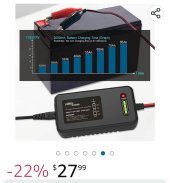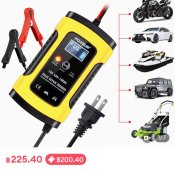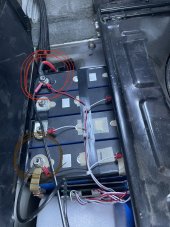Hi all, I searched, I promise and couldn’t fit the info I need. I have a 120ah lifepo4 battery I built from prismatic cells in my van. It charges via a small solar panel permanently mounted and the alternator when I am driving. Recently I haven’t been driving much and my always-on fridge is starting to drain the battery. Turning the fridge off is not an option. I’d like to be able to cheaply charge the battery while parked. It doesn’t need to be a fancy system, just a temp extension cord from the garage is fine.
Here are my questions.
1. I picked up a 4 amp charger from the internet that says it is for lifepo4 batteries. (This one: https://a.co/d/gfdUN8z). Can I safely just hook this up to the main pos and negative on the battery pack and it will slowly charge or do I need to connect it to the BMS or charge controller somehow?
2. Do I need to “watch over it” or will it stop charging when the pack is about full.
Thanks so much!
Here are my questions.
1. I picked up a 4 amp charger from the internet that says it is for lifepo4 batteries. (This one: https://a.co/d/gfdUN8z). Can I safely just hook this up to the main pos and negative on the battery pack and it will slowly charge or do I need to connect it to the BMS or charge controller somehow?
2. Do I need to “watch over it” or will it stop charging when the pack is about full.
Thanks so much!







